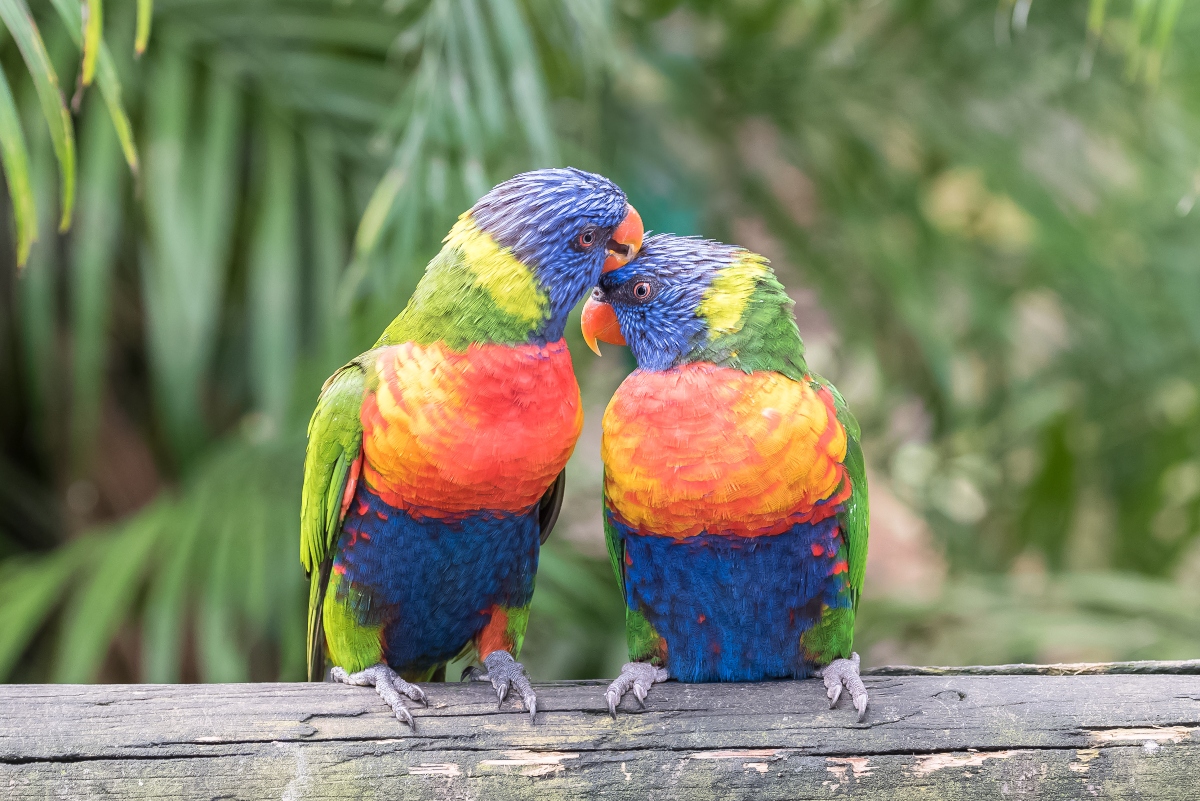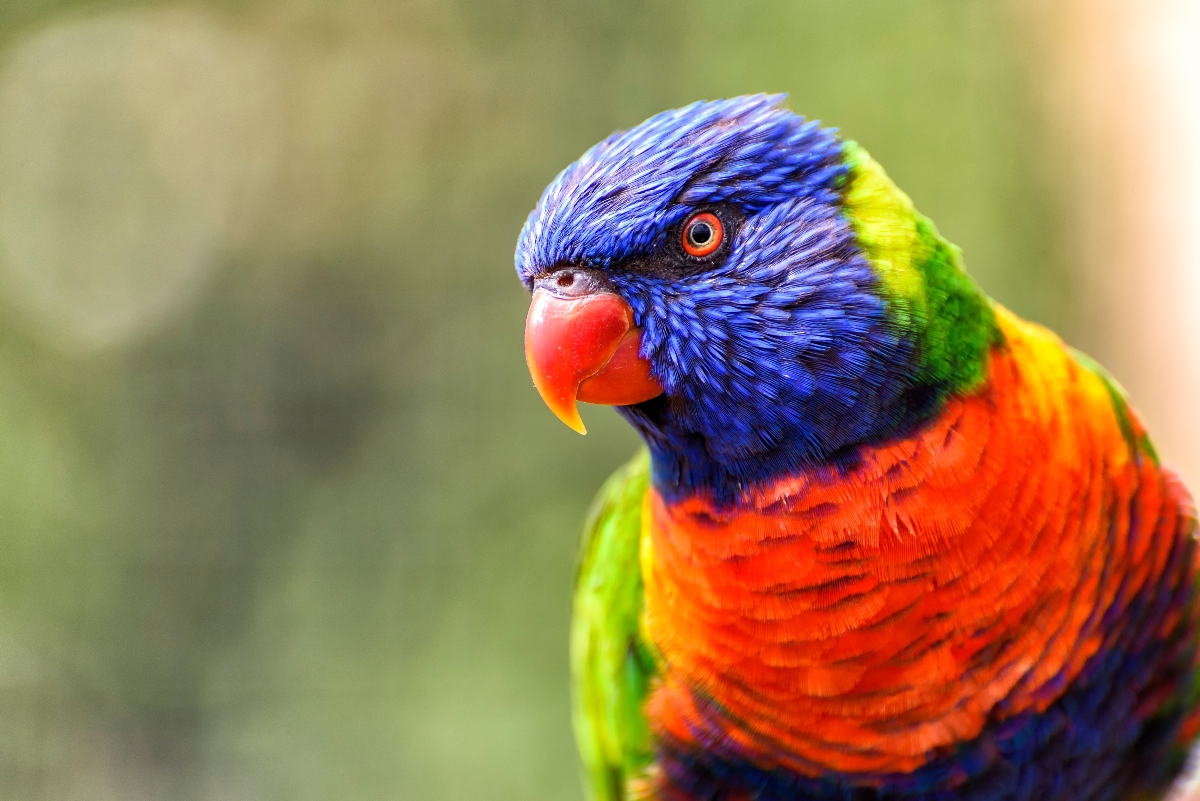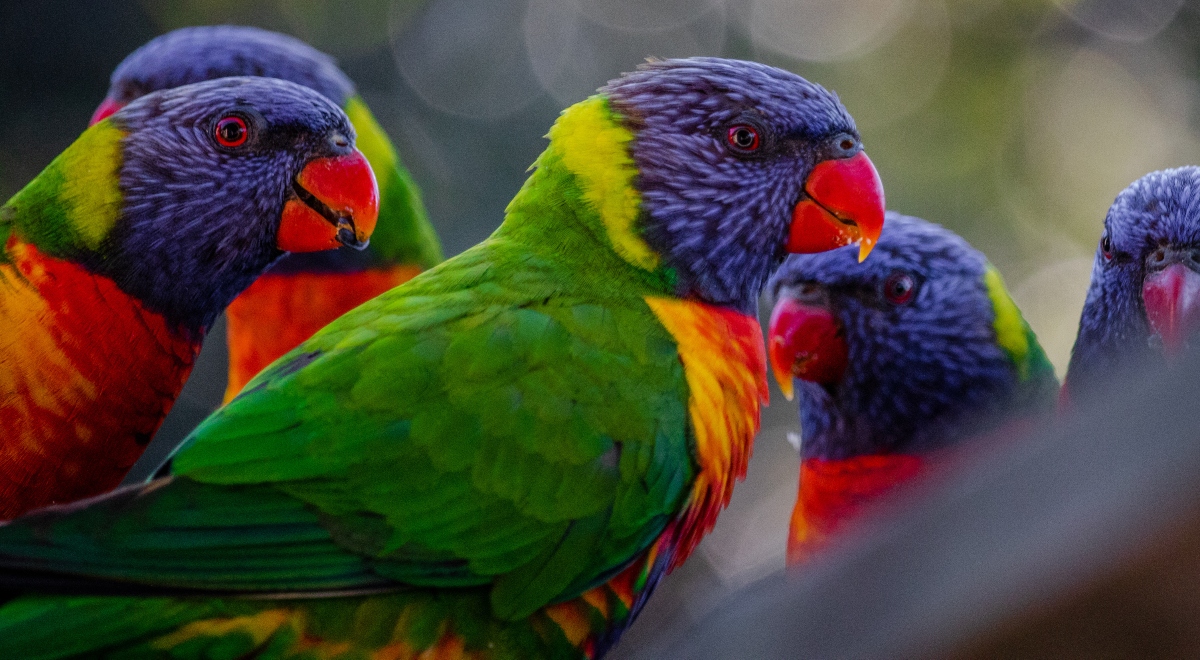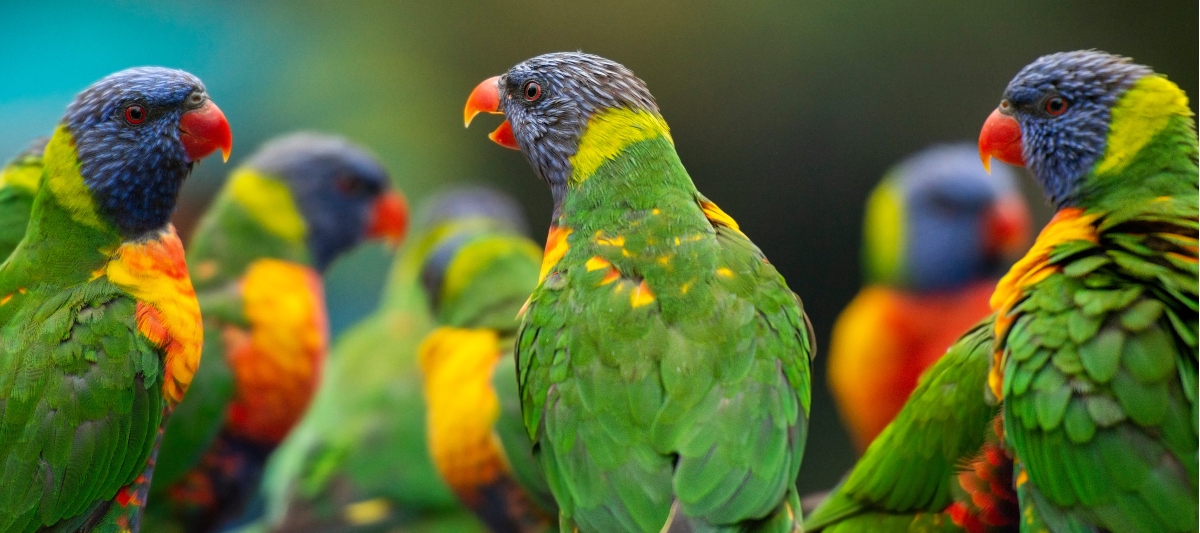As the sun filters through the dense foliage of tropical and subtropical forests, flashes of vibrant red, green, blue, and yellow dart from tree to tree. These bursts of color belong to the vivacious Lorikeets, Parrot species that are as delightful in personality as they are in appearance.

Lorikeets, belonging to the genus Trichoglossus, are small to medium-sized Parrots characterized by their brilliantly colored plumage and a specialized brush-tipped tongue. This unique tongue is nature’s perfect tool for feeding on nectar from flowers, allowing Lorikeets to extract this sweet treat with ease. Alongside nectar, they also consume fruits, making them vital pollinators and seed dispersers in their ecosystems.
Their vibrant feathers, which can range from fiery reds and oranges to electric blues and greens, aren’t just for show. These colors play a crucial role in social interactions, mating, and even camouflage among the bright flowers and fruits of their habitat.

Native to the Australasian region, including Australia, New Zealand, and Southeast Asia, Lorikeets have adapted to a variety of environments. While they are primarily associated with rainforests, they can also be found in coastal bushlands and urban areas. Some species, like the Rainbow Lorikeet (Trichoglossus moluccanus), have become common sights in Australian cities, where they visit gardens and balconies, delighting residents with their antics.
Life in the treetops is social for Lorikeets. They are often found in pairs or noisy flocks, communicating with a range of chattering calls. Their gregarious nature extends to breeding, where they nest in tree hollows and both parents take turns incubating the eggs and feeding the chicks.

However, as with many birds of vibrant beauty, Lorikeets face threats from the illegal pet trade. Their playful nature and striking appearance make them sought-after pets, which can lead to trapping in the wild. Habitat loss is another concern, with deforestation reducing the natural spaces they call home.
Across cultures and communities in their native regions, Lorikeets are often celebrated for their spirited energy and bright colors. They feature in local stories and art, symbolizing joy, vibrancy, and the rich biodiversity of the tropics.

For bird enthusiasts, watching a flock of Lorikeets is akin to witnessing a living rainbow. Their lively interactions, aerial acrobatics, and heartwarming pair bonds offer a colorful glimpse into the wonders of avian life. The Lorikeet, with its palette of nature’s best hues, remains a testament to the splendors of the natural world and the importance of its preservation.